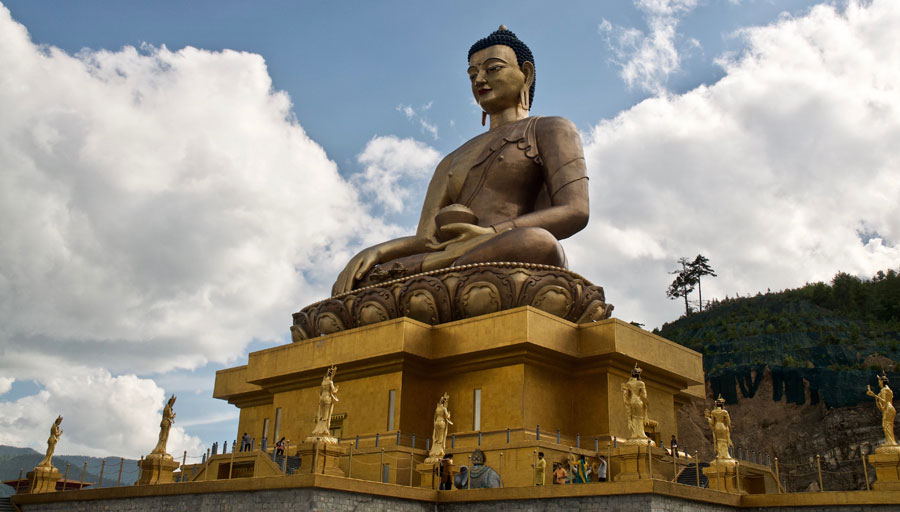THIMPHU

The 54 meters high Buddha dordenma statue is dedicated to world peace and prosperity
Thimphu, Bhutan’s largest urban centre, easily stands out as one of the smallest and most unique capitals in the world.
Set in a wooded valley (2,334 m) surrounded by towering hills with the meandering Wang Chhu (river) running through it, Thimphu has numerous historical and religious monuments that date back to the 12th century. Among the new structures, built in the past few decades, traditional architecture blends with the modern in a fine balance. Here, gloved policemen direct traffic and farmers bring their fresh organic produce for sale during the weekends. It also has a sizeable population of stray dogs that can become quite a disturbance at night, so ear plugs come in handy.
Thimphu is 50 kms from the international airport in Paro valley. The one-hour drive follows the Paro and Thimphu rivers passing small village settlements, bare slopes and rocky hillsides.
Places of interest
- Kuenselphodrang where an enormous statue of a seated Buddha overlooks Thimphu valley; walking and biking trails leading into the nearby pine forests
- The National Memorial Chorten built in 1974 in memory of the third King and for universal peace and harmony
- The 12th century Changangkha Lhakhang that sits on ridge in central Thimphu
- Takin Zoo in North Thimphu
- Simply Bhutan that showcases rural life before the advent of modern development
- The Zilukha Nunnery overlooking Tashichhodzong fortress, the seat of government
- The Textile Museum which has a substantial collection of antique Bhutanese textile artefacts
- The Bhutan Postal Museum that tells the story of the evolution of Bhutan’s postal services.
- Centenary Farmers’ Market where farmers from nearby villages bring their produce for sale on weekends
- Tashichhodzong in north Thimphu, a 17th century fortress that today houses the central government, the throne room and is the summer residence of the central monastic body
- Semtokha Dzong, built in 1629 by Zhabdrung, who gave Bhutan its political and territorial integrity
